Woodturning is a popular and ancient craft that uses a lathe to shape wood into various forms. It has been practised for centuries. With evidence of woodturning dating back to ancient Egypt.
In recent years, woodturning has gained popularity due to the rise of DIY and handmade culture. While it can be a fulfilling and rewarding hobby, it is important to recognize that woodturning poses a significant injury risk. Many people often consider it one of the most dangerous woodworking activities.
This may surprise many, as woodturning’s serene and meditative nature can often mask the potential dangers behind every project. However, the reality is that wood-turning accidents can and do happen, resulting in serious injuries that can have long-lasting effects. We will explore the 5 reasons why woodturning is dangerous and why woodturners of all skill levels must prioritize safety in their craft.

Potential Hazards In Woodturning And The Importance Of Safety Precautions
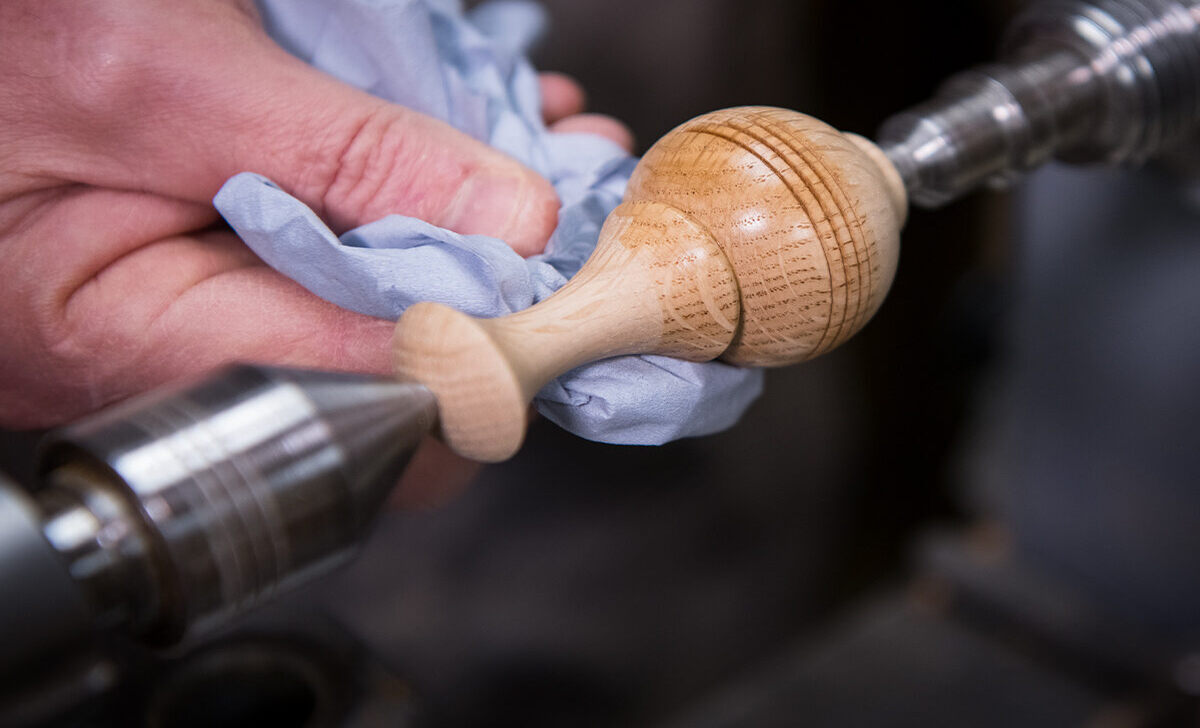
Woodturning workshops can be hazardous environments if proper safety precautions are not taken. Using high-speed machinery, such as a wood lathe, poses several risks. One of the primary concerns is the generation of wood dust, which can lead to respiratory issues, including lung cancer, over time.
To protect against this, woodturners should wear a respirator and work in a well-ventilated area. Additionally, safety equipment, such as face shields and eye protection. Should be worn to shield against flying wood chips and debris. It is important to wear fitted clothes and tie up long hair to avoid getting caught in the machinery.
Why Is Woodturning Dangerous: 5 Reason
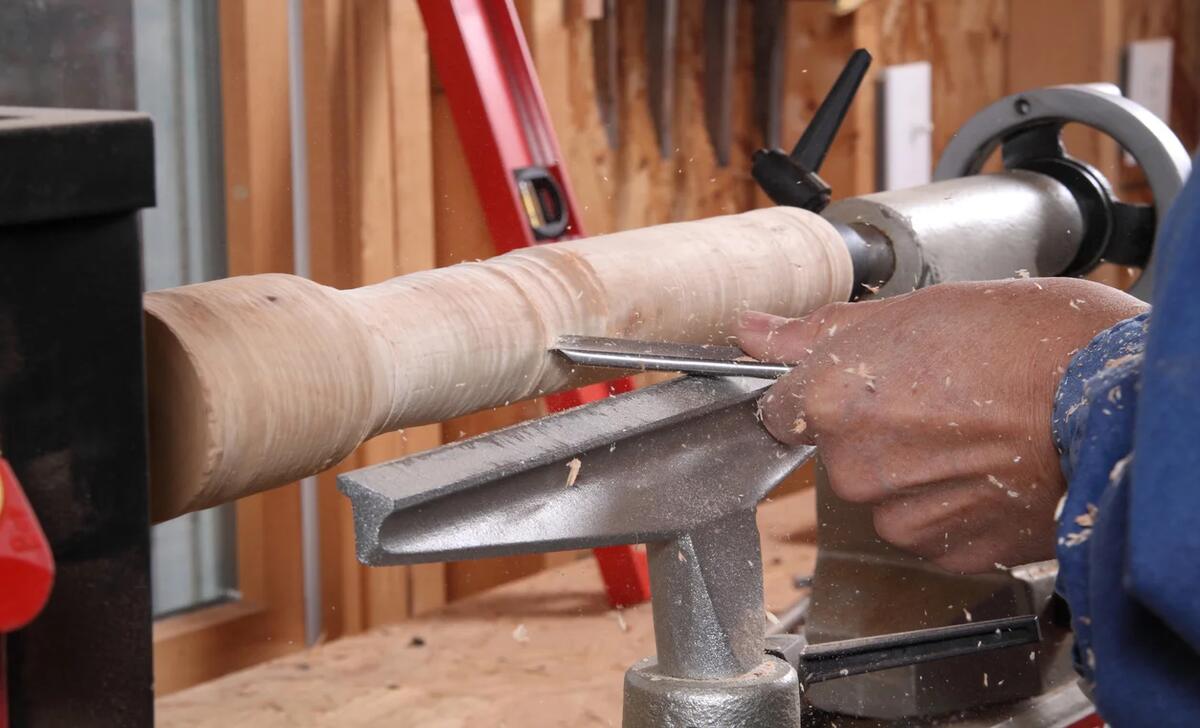
Woodturning is a popular craft that uses a lathe to shape wood into various objects. While it can be a rewarding and enjoyable hobby, it comes with its fair share of risks. Understanding why woodturning is dangerous is crucial to ensuring safety in the workshop. Here are five reasons why this craft can be hazardous.
1.High-Speed Rotating Objects Can Cause Serious Injuries
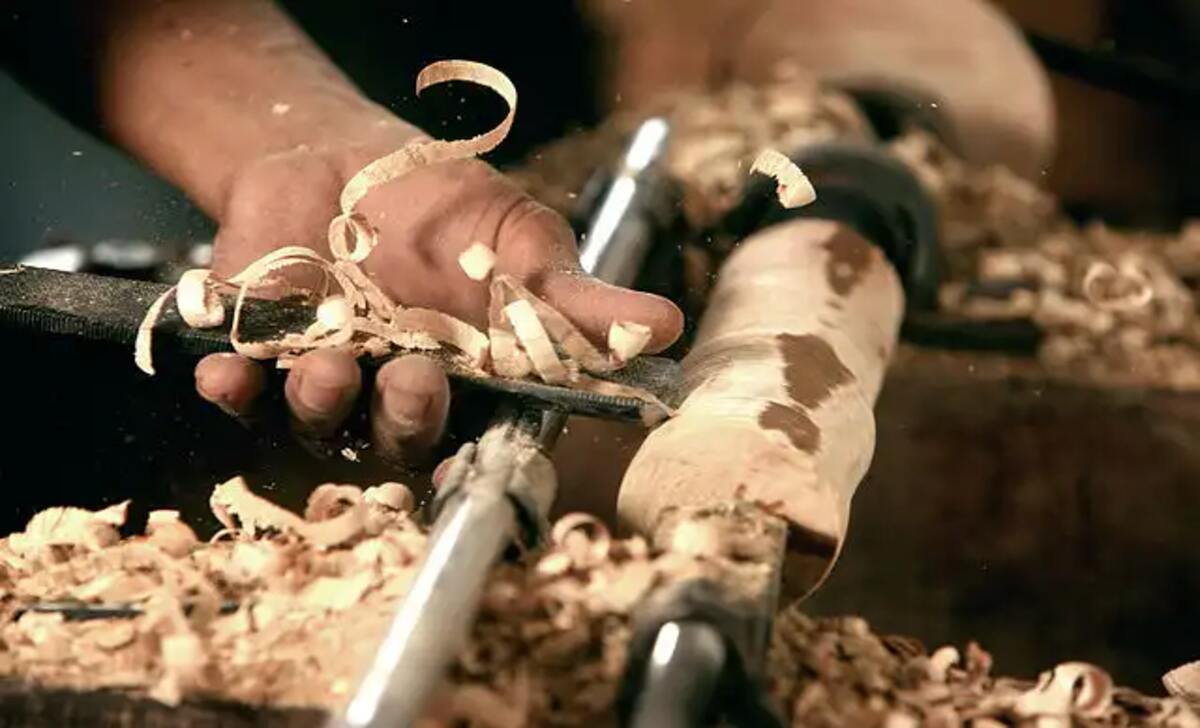
One of the most prominent dangers in woodturning is the risk of serious injuries from high-speed rotating objects, which can reach speeds up to 4000 rpm. As woodturners work on their projects, they are exposed to spinning wood pieces, resulting in severe cuts and lacerations. If proper precautions are not taken, there can be amputations.
The high speeds at which these objects rotate mean that any contact with a piece of wood can result in serious harm. Even a small piece of wood, when rotating at high speed, has enough force to cause significant injuries to the turner. To minimize the risk of serious injuries, woodturners should always exercise caution and follow safety protocols.
It is imperative to wear appropriate personal protective equipment, such as safety glasses, face shields, and protective clothing, to shield against potential accidents. Proper tool rest positioning and handling techniques and securely locking the tailstock in place can also help prevent the piece of wood from catching, reducing the risk of serious injuries.
2.Risk Of Flying Wood Chips And Debris
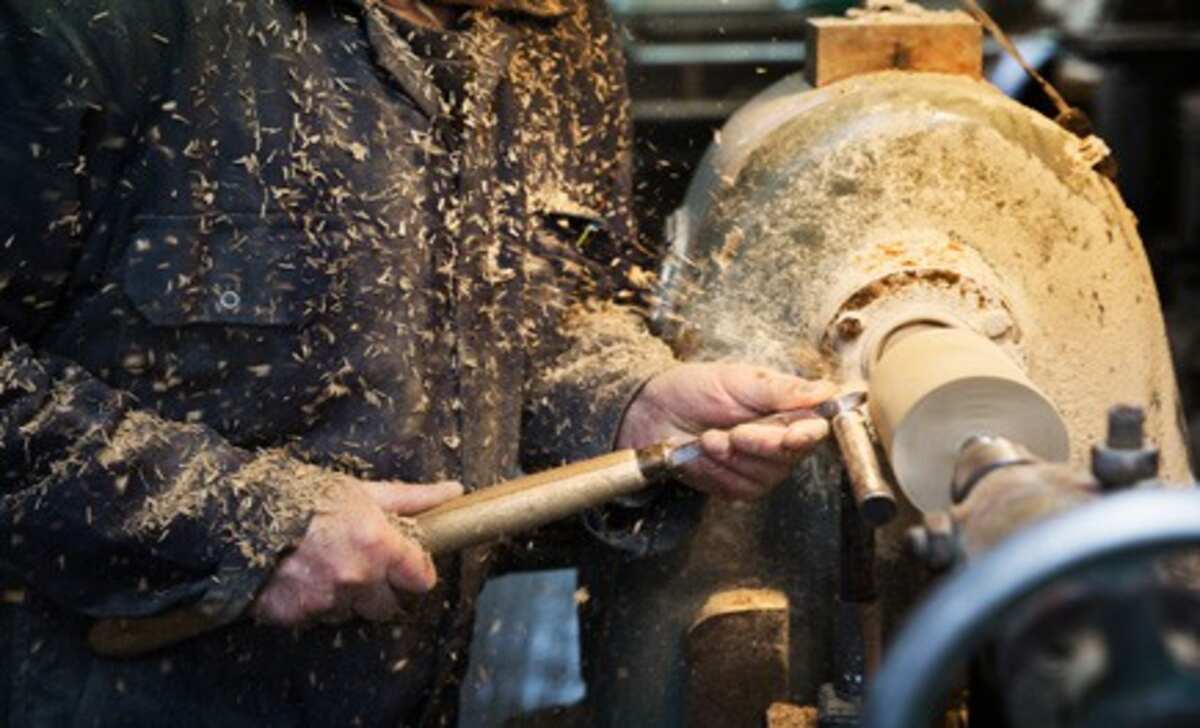
Another hazard of woodturning is the risk of flying wood chips and debris. Woodturners shape and cut the wood using sharp tools, which can throw small pieces of wood, shavings, and debris into the air at high speeds. This presents a serious safety concern, as these projectiles can cause eye injuries, lacerations, and other harm. Always wear proper eye protection and take precautions to avoid hitting yourself with flying wood shavings and chips while working on a lathe.
To protect against this risk, woodturners should always wear appropriate eye protection, such as safety glasses or a full face shield. These protective measures create a barrier between the woodturner’s face and any flying wood chips or debris, significantly reducing the chances of injury. It is essential to prioritize safety and use face shields and eye protection as a standard practice when using a sander in the woodturning workshop.
3.Exposure To Harmful Substances
Woodturning exposes individuals to potentially harmful substances, particularly wood dust. When a turner operates a lathe, the lathe generates fine particles of dust that the turner can inhale. Prolonged exposure to wood dust can lead to various health issues, including respiratory problems, allergies, and even lung cancer.
To protect against these hazards, woodturners should wear respiratory protection, such as a respirator, to filter out the wood dust particles. A well-fitted respirator, specifically designed for woodworking, will help prevent inhaling harmful substances, promoting better lung health. Additionally, working in a well-ventilated area or using dust extraction systems can minimize the risk of exposure to wood dust and splinters.
4.Lack Of Proper Training And Knowledge
A lack of proper training and knowledge can significantly increase the risk of accidents in woodturning. Woodturning requires understanding various techniques, tool handling, and safety protocols. Without the necessary knowledge, turners may not be able to identify potential dangers or know how to handle turning tools correctly.
It is crucial for woodturners, especially beginners, to seek proper training and education before starting their woodturning journey. Learning from experienced turners, attending workshops, or taking classes can provide valuable insight into safe woodturning practices.
Amateurs working alone may only discover the dangers the hard way, which is a good reason to go on a turning course. Acquiring the necessary knowledge and skills will reduce the risk of accidents and enhance the quality of work produced.
5.Equipment Malfunction And Errors
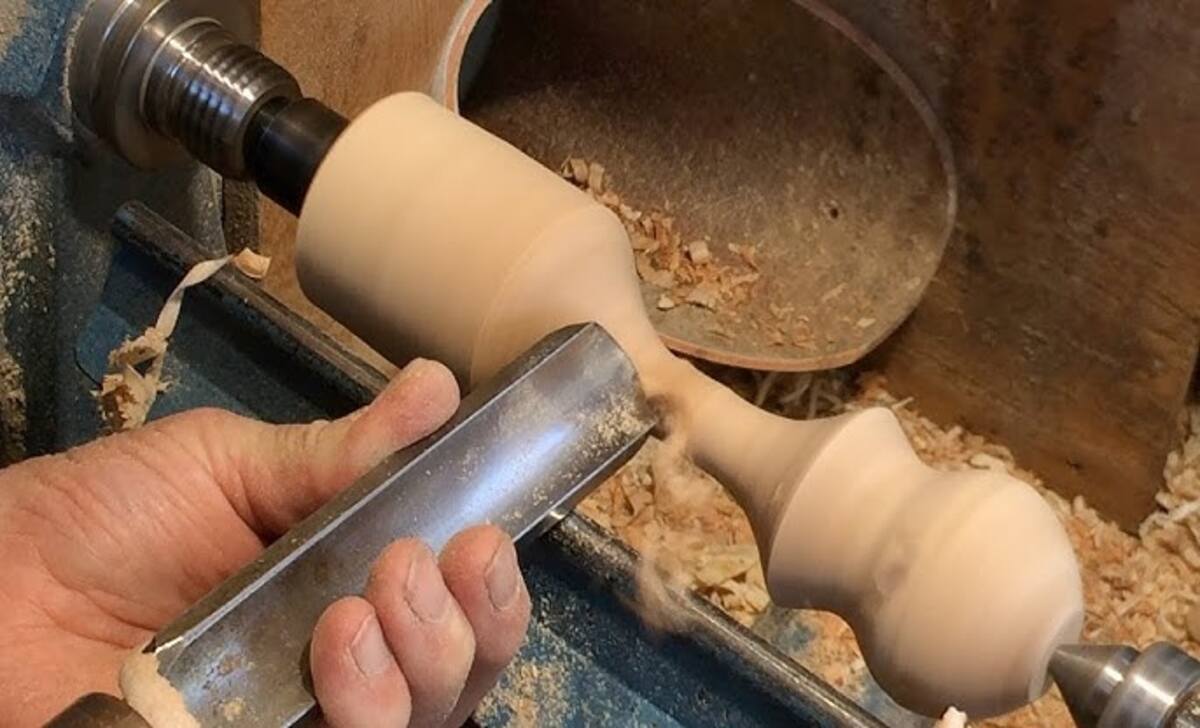
Equipment malfunctions can happen despite proper maintenance, leading to accidents and injuries. Power tools like modern lathes are intricate machines with numerous moving parts. And equipment guards should always be in place before using the machinery. Additionally, user errors, including incorrect tool setup, inadequate safety precautions, or momentary lapses in attention, can also contribute to accidents.
To minimize the risk of equipment malfunction and user errors, woodturners should follow safety guidelines provided by the lathe manufacturer. Regular inspection and maintenance of turning tools and equipment will help identify potential issues before they become major concerns.
Woodturners should always take the time to familiarize themselves with proper safety procedures. Ensuring all safety features are in place and functioning correctly. By investing in safety precautions, turners can significantly reduce the risk of accidents in the woodturning workshop, including potential dangers when working with a spinning workpiece.
Ways To Mitigate These Risks Through Regular Maintenance And Careful Handling
Regular maintenance and careful handling are crucial in mitigating various systems and equipment risks. By following these practices, individuals can ensure their assets’ longevity and optimal functioning while minimizing the chances of accidents or breakdowns. Here are some ways to mitigate these risks:
- Scheduled Inspections: Regularly inspecting equipment allows for identifying potential issues before they escalate into major problems. This includes checking for wear and tear, loose connections, and any signs of damage or deterioration.
- Routine Cleaning: Proper cleaning enhances equipment performance and prevents the build-up of debris or contaminants that can cause malfunctions or breakdowns. It is important to use appropriate cleaning techniques and materials to avoid causing further damage.
- Lubrication: Adequate lubrication of moving parts such as gears, bearings, and motors reduces friction, heat, and wear. This minimizes the risk of premature failure and ensures smooth and efficient operation.
- Calibration And Alignment: Regular calibration of instruments, such as pressure gauges or temperature sensors, ensures accurate readings and reliable performance. Additionally, aligning mechanical components properly helps prevent excessive strain and premature wear.
- Training And Proper Handling: Ensuring that personnel are well-trained in the operation and handling of equipment reduces the risk of accidents and damage. Proper handling includes following safety procedures, using appropriate tools, and adhering to manufacturer guidelines.
Conclusion
Woodturning can be a fulfilling and creative hobby, but it has risks. Understanding the potential dangers associated with woodturning and taking necessary safety precautions to protect yourself is important. High-speed rotating objects, flying wood chips, exposure to harmful substances. Lack of proper training and equipment malfunction are why woodturning can be dangerous.
To mitigate these risks, it is essential to prioritize regular maintenance of your tools and equipment and practice careful handling techniques. Always wear appropriate safety gear, such as goggles, gloves, and a face shield, and ensure proper ventilation in your workspace.
Remember, you can only fully enjoy the joy of woodturning when you prioritize your safety. So, take the necessary precautions and enjoy this wonderful craft responsibly.
Frequently Asked Questions
1.What Are The Hazards Of A Wood Lathe?
Wood lathe hazards include entanglement risks due to the rotating wood piece and laceration risks from sharp cutting tools. And respiratory risks from wood dust. When operating a wood lathe, you should always wear proper safety equipment, such as eye protection and respiratory masks.
2.What Are The Disadvantages Of Woodturning?
If safety measures aren’t followed, woodturning can pose risks. The process generates dust, which can lead to respiratory issues. Handling sharp tools improperly can cause injuries. Developing the necessary skills and practice takes time.
3.Is Using A Lathe Dangerous?
Using a lathe can be dangerous if proper safety precautions are not taken. Safety measures include wearing protective gear, avoiding loose clothing and distractions, using sharp tools, and having training and experience to reduce the risk of accidents.
4.How Can You Be Safe With A Wood Lathe?
Always wear the appropriate personal protective equipment to secure loose clothing and hair to ensure your safety while using a wood lathe. And mount the lathe securely. Additionally, adhere to the recommended speed and avoid using damaged tools.
5.Is Wood Turning Noisy?
Woodturning can be noisy, especially when using tools like lathes, which create a loud humming noise. Wear ear protection while woodturning to prevent hearing damage. Additionally, noise-reducing measures like acoustic foam or soundproof curtains can be used in the woodturning workspace.
